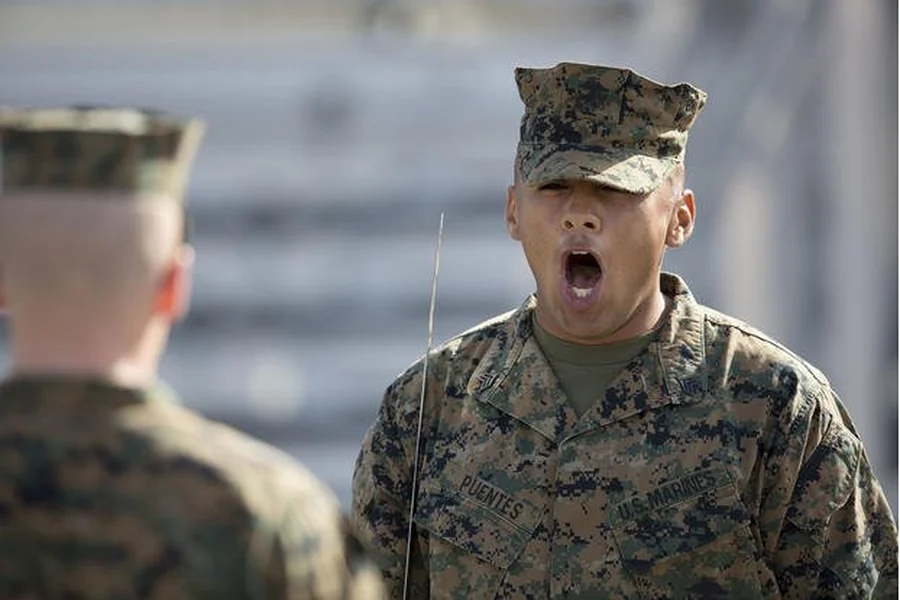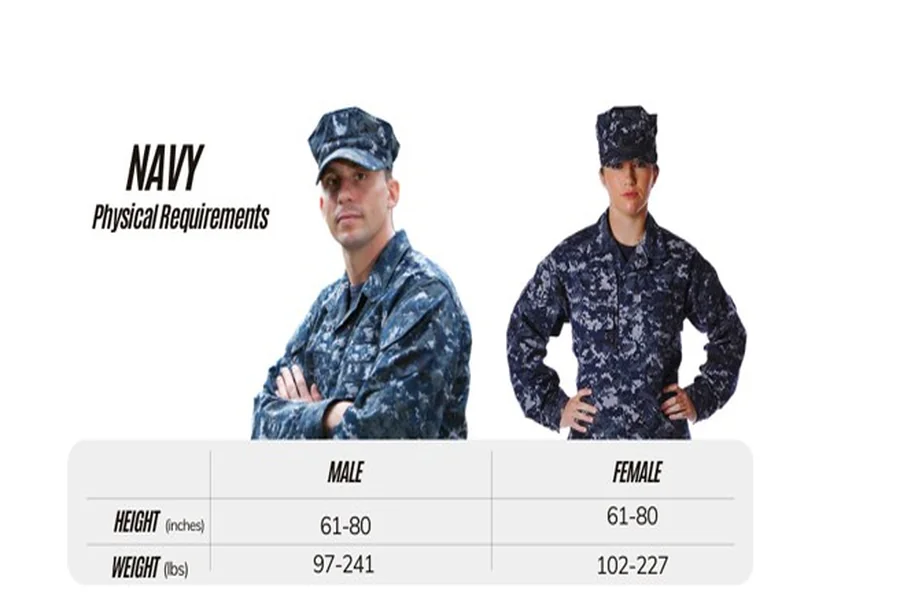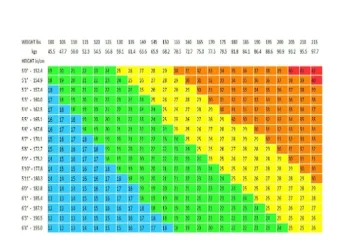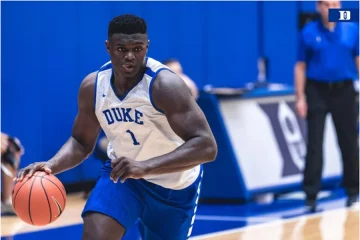When people search for USMC height and weight standards, what they’re asking is: What does it take to be physically ready for the Marine Corps?
But behind the charts, the cutoffs, and the military fitness tests lies a deeper story — one of discipline, identity, and transformation.
In this article, we’ll go beyond the numbers and explore the full meaning of USMC height and weight standards — how they’ve evolved, why they matter, and how they reflect the core values of the United States Marine Corps.
We’ll also take a deep look at:
What the current height and weight standards are
How body composition is measured through neck and waist measurements
Why Marines must meet these demands — not just for looks, but for performance
And how these rules impact both male and female recruits emotionally and physically
Let’s dive into the real story behind the standard.
Understanding the USMC Fitness Requirements
The United States Marine Corps has some of the most rigorous physical standards in the military — especially when it comes to body fat and build.
Unlike other branches that focus solely on BMI, the USMC uses a height-to-weight table combined with neck and waist measurements to determine if a recruit or active-duty Marine meets fitness expectations.
Here’s a breakdown of the current USMC height and weight standards :
Male USMC Height & Weight Standards (Max Allowed)
HEIGHT (INCHES)
MAX WEIGHT – 18% BODY FAT
MAX WEIGHT – 26% BODY FAT
60 (5’0″)
139 lbs
154 lbs
65 (5’5″)
161 lbs
179 lbs
70 (5’10”)
185 lbs
206 lbs
75 (6’3″)
210 lbs
234 lbs
Female USMC Height & Weight Standards (Max Allowed)
HEIGHT (INCHES)
MAX WEIGHT – 22% BODY FAT
MAX WEIGHT – 30% BODY FAT
60 (5’0″)
121 lbs
134 lbs
65 (5’5″)
145 lbs
161 lbs
70 (5’10”)
169 lbs
188 lbs
75 (6’3″)
194 lbs
216 lbs
“It’s not about being perfect. It’s about being prepared.”
That kind of mindset defines every Marine — from boot camp to combat.
The Science Behind the Standard
The USMC doesn’t use BMI alone — they rely on a height and weight chart combined with body circumference measurements to assess body fat levels more accurately than BMI can.
Here’s how the process works:
STEP
WHAT HAPPENS
Step 1
Compare height and weight to official chart
Step 2
Measure neck and waist
Step 3
Calculate body fat percentage
Step 4
Determine if within allowed limits
This method helps ensure that muscular individuals aren’t unfairly penalized — while still maintaining strict health and readiness standards.
“Muscle matters. But so does mobility.”
That emotional truth is part of what makes the USMC unique among the armed forces.

Why These Standards Matter
Meeting USMC height and weight standards isn’t just about looking like a Marine — it’s about performing like one.
Marines must carry gear, run long distances, climb walls, and swim under pressure — all while staying alert and agile.
Here’s how the standards tie into real-world readiness:
REQUIREMENT
PURPOSE
Weight control
Prevent injury, maintain endurance
Neck/waist measures
Track unhealthy fat gain over time
Uniform fit
Ensures proper gear for mission success
Physical tests
Prepares for Combat Fitness Test (CFT)
“Being fit means being ready — for anything.”
That kind of honesty sets the Marine Corps apart — not just as an institution, but as a culture of excellence.
The Emotional Side of Meeting Standards
For many recruits, hitting the USMC height and weight standards is more than just a checklist item — it’s a personal battle.
Some come in naturally built for the job. Others struggle with body image, confidence, and even shame before meeting the mark.
One former Marine shared:
“I cried after getting flagged for weight. I thought I was strong enough. Turns out, I had to get stronger — mentally too.”
That emotional depth is woven into everything the Marine Corps teaches — strength isn’t just physical. It’s psychological, spiritual, and deeply rooted in self-respect.
USMC Height and Weight vs. Other Branches
The USMC standards are known to be stricter than those of the Army, Navy, or Air Force — especially in terms of body fat thresholds.
Here’s a quick comparison:
BRANCH
MALE MAX BODY FAT
FEMALE MAX BODY FAT
NOTES
USMC
18%
22%
Uses tape measurements
Army
24%
30%
Also based on height/weight chart
Navy
22%
33%
Tape test used similarly
Air Force
20%
29%
Focus on appearance and function
While the other services allow higher body fat percentages, the Marine Corps emphasizes lean muscle and overall readiness — something that builds character, not just physique.
Frequently Asked Questions (FAQ)
Q1: What are the USMC height and weight standards?
A: They vary by height and gender, but males must stay below 18% body fat, and females under 26%, using a height and weight chart and a tape test.
Q2: Is there a minimum height requirement?
A: No official minimum, but you must be at least 5’0″ tall to meet the lowest weight range without falling below healthy thresholds.
Q3: Can you join the Marines if you’re overweight?
A: If you exceed the height and weight chart, you may be placed on a weight loss program — and could be denied entry if you are not compliant.
Q4: Do tattoos affect USMC height and weight standards?
A: Tattoos don’t affect weight, but they do play a role in uniform and professional appearance — which ties into overall grooming standards.
Q5: Are there exceptions for athletes or muscular builds?
A: Yes — Marines who exceed the weight chart due to high muscle mass may qualify via tape measurement and body fat calculation.
Q6: Where can I find the official USMC height and weight chart?
A: You can access the latest version on the Official U.S. Marine Corps Recruiting Website.
Looking Ahead: The Future of USMC Fitness
As society changes, so do the ways the Marine Corps approaches fitness, nutrition, and health.
There’s an ongoing discussion about:
Updating the charts for modern body types
Incorporating more functional testing
Supporting mental health during weight-loss efforts
Creating inclusive standards while keeping the edge
Whatever comes next, one thing remains clear:
The USMC height and weight standards are more than just data — they’re a symbol of pride, preparation, and purpose.
Final Thoughts: More Than Just a Chart
The USMC height and weight standards are more than just guidelines — they’re a gateway to belonging, a test of will, and a reflection of the Marine ethos: Every inch counts. Every pound matters.
From recruits trying to cut it as seasoned veterans stay sharp, these rules shape lives — not just bodies.
That’s why the USMC isn’t just about being big. It’s about being ready.
Follow USMC Updates Online
Stay updated with the latest news, policies, and training tips from the Marine Corps community:
PLATFORM
ACCOUNT LINK
Official USMC
Marine Corps Recruiting
Instagram
USMC Instagram
Facebook
USMC Facebook
YouTube
USMC Recruitment Channel



